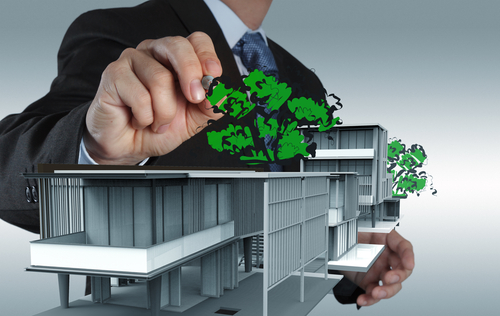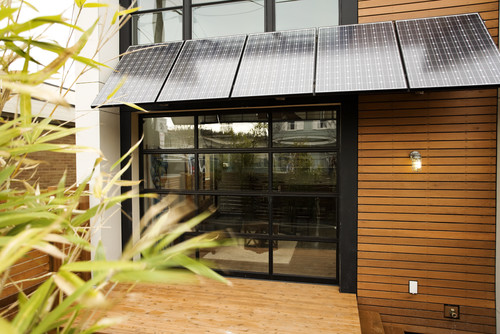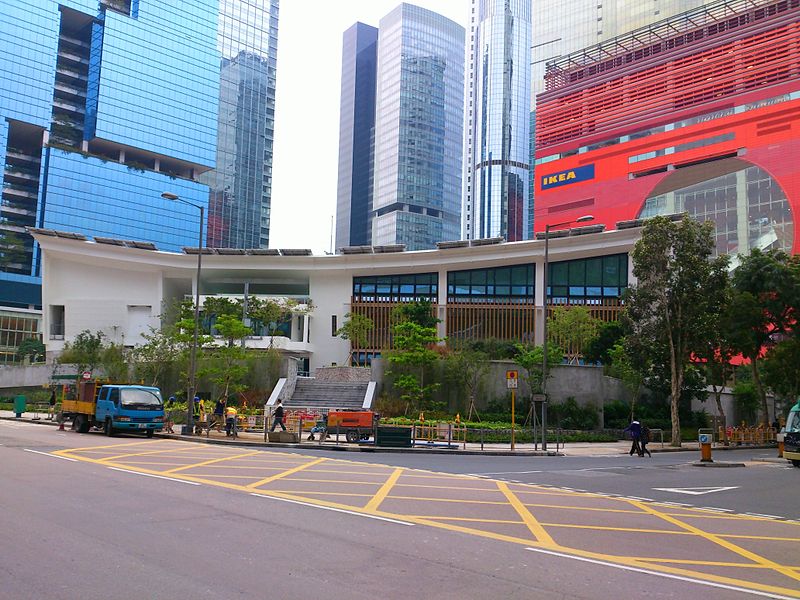Cities are now home to a majority of the world’s population and are on the front line in the battle against climate change. While action at the federal level in the U.S. has been painfully slow, cities in the U.S. are starting to lead by example at a local level. Cities must take an active role in helping their constituents (starting with themselves of course) to mitigate their impact on climate change as well as begin investing in appropriate climate change adaptation solutions.
I felt that it was time to do some analysis on U.S. Cities which are positioning themselves to be leaders in climate capitalism. I have used proxies and a methodology for ranking the largest cities in the U.S. based on a range of factors including political commitment (as measured by number of commitments the city has made with the U.S. Mayors, Carbon War Room Cities Challenge, Clinton 40, and ICLEI membership), green buildings (LEED buildings per capita), university leadership (AASHE membership/capita), transit access and use (range of metrics on heavy and light rail usage per capita), clean tech investment (venture funds based in city with clean tech investments in 2010) and energy and GHG emissions (from a range of sources)*.
The Top 10 Metropolitan Climate-Ready Cities in the U.S. are:
10.) Chicago
My recent rankings of low-carbon politicians was in part a tribute to the recently retired former mayor of Chicago, Richard Daley. Under his leadership Chicago made major strides in becoming probably the greenest metropolitan city in the Midwest. Chicago now boasts more than 300 miles of bikeways, 7 million square feet of green roofs and currently has more green hotels than any city in the U.S. (13).
9.) San Jose
This may be among the most surprising cities to make the Top 10 as San Jose is not known (yet) for its leadership in climate protection. However, in 2007, the San Jose city council approved a Green Vision which seeks to “transform San Jose into the world center of Clean Technology innovation” and to demonstrate that the goals of economic growth, environmental stewardship and fiscal responsibility are inextricably linked.” It didn’t hurt San Jose in my rankings that I counted the number of clean tech funds in each city that invested in 2010. Of course being near the epicenter of Silicon Valley San Jose ranked #1 in our list in this category. Also you gotta love cities that take the bold step of setting big hairy audacious goals and transparently track their performance against them.
7.) Philadelphia (tie with New York)
Like San Jose, Philadelphia has taken the appropriate step to develop, track and transparently report its sustainability performance against forward looking targets. Greenworks Philadelphia established 15 sustainability targets including energy, buildings, GHG reductions, waste, transit and agriculture among others. Along with Seattle and New York, Philadelphia was listed by Fast Company, as a leading city in the U.S. for its aggressive GHG reduction targets.
7.) New York (tie with Philadelphia)
Conservative Mayor Bloomberg is a strong advocate for climate leadership and, once again, advocating setting targets and tracking performance. In a recent Clinton 40 Climate meeting, Mayor Bloomberg noted: “If you can’t measure it you can’t manage it.” New York of course is the envy of most cities in the U.S. when it comes to accessibility and use of rail transit (ranking #1 on transit/capita in this study). It is also the most dense city in North America.
6.) San Diego
Another West Coast city less commonly ranked amongst the top 10 on these lists, San Diego has been making great strides in transitioning to a low-carbon economy. San Diego intends to take advantage of its great climate and abundant sun by adding 50 megawatts of renewable energy by 2013 (much of it being new solar capacity) while achieving a 50 megawatt reduction in energy use through efficiency and demand side management measures. San Diego also has a 3-line, 82 kilometers light rail trolley system which has 90,000 daily trips.
5.) Denver
One of the U.S. cities I have had the pleasure to live in, Denver Colorado is famous for its mountain views and big skies. Denver has made great strides over the past 10 years towards becoming a recognized U.S. leader in the transition to a low carbon economy. In 2009, former Denver Mayor Hickenlooper was awarded the US Mayor’s Climate Protection Award for Denver’s Fast Track light rail program. According to a city press release, Denver’s Fast Track “is the most ambitious transit initiative in U.S. history… building 119 miles of new light rail” within just a few years. Along with strong sustainability objectives, Denver is projecting a 37% increase in job growth by 2030, showing that the low carbon economy is alive and well.
4.) Washington, DC
While our federal law makers and senior political leadership based in Washington have seriously underachieved with respect to progress towards the low-carbon economy, the City, or District I should say, has earned this top 5 position. Staying on the topic of public transit, DC residents are the 2nd most active users of rail transit in the U.S. and the 3rd highest per capita (behind New York and San Francisco). The D.C. government has committed to reduce its emissions 30% by 2020 and 80% by 2050 (over 2006 levels), has passed a strong green building code, is 2nd in the country in green roofs (behind Chicago) and is 3rd in the nation in purchase of renewable power.
3.) Portland (OR)
The perennial favorite in all sustainable city rankings, Portland has many admirable features that demonstrate a commitment to the low-carbon economy. I have been to Portland dozens of times and I can’t get enough of it. For a relatively small city, it has an impressive public transit system, several (4) universities actively committed to sustainability and an amazing number of LEED certified buildings (127). With so much going on for them, it is no wonder Portland aims to be “the most sustainable city in the world by investing in high performance buildings and green streets, ecosystem restoration, businesses that create sustainable economic opportunities for all, green and healthy affordable housing, and social equity policies and practices.”
2.) Seattle
Seattle, another Pacific Northwest city used to being on sustainability city rankings, usually behind Portland, occupies second place in this ranking. Former Mayor Greg Nickels actually launched the U.S. Mayors for Climate Protection (which earned Seattle an extra point in my system). The Seattle area has 6 universities committed to the Association for the Advancement of Sustainability in Higher Education (AASHE) and is home to the Bainbridge Graduate Institute one of the first and best MBA programs in the world dedicated exclusively to sustainability education. Seattle has among the most LEED certified buildings in the U.S. (132), has an active clean tech investing sector, and is home to the country’s first major utility to become carbon neutral.
1.) San Francisco
Where do I start? I believe it all starts with political leadership and commitment. San Francisco is one of only three cities which made the final screening who are members of the U.S. Mayors for Climate Protection, Clinton 40, the Carbon War Room and ICLEI. Like Seattle, it has a very proactive university community with 11 members of AASHE and is also home to Presidio Graduate School, another one of the first and best dedicated sustainable MBA programs in the world. San Francisco also has the largest number of LEED certified buildings per capita in the U.S. and has an active clean tech investment community. It is home to probably the largest impact investment conference in the world, SOCAP. San Francisco ranked in the top 3 in every category I evaluated and deserves to be crowned the “coolest” Climate-Ready City in the U.S. for 2011.
Here are the breakdowns of the ratings on each category for the top 10 cities.
|
Political Commitment (1-4 points) |
University Rankings |
Transit Rankings |
Investment Rankings |
Green Building Rankings |
GHG Rankings |
Cumulative Rankings |
| San Francisco, CA |
4 |
1 |
2 |
3 |
1 |
1 |
1 |
| Seattle, WA |
4 |
3 |
3 |
3 |
3 |
3 |
2 |
| Portland, OR |
3 |
2 |
6 |
None |
2 |
2 |
3 |
| Washington, DC |
4 |
8 |
3 |
5 |
5 |
8 |
4 |
| Denver, CO |
2 |
5 |
8 |
None |
4 |
4 |
5 |
| San Diego, CA |
3 |
4 |
7 |
None |
6 |
6 |
6 |
| New York, NY |
2 |
9 |
1 |
2 |
10 |
5 |
7 |
| Philadelphia, PA |
3 |
7 |
4 |
6 |
9 |
7 |
7 |
| San Jose, CA |
4 |
10 |
10 |
1 |
8 |
9 |
9 |
| Chicago, IL |
2 |
6 |
5 |
None |
7 |
10 |
10 |
In a previous post I highlighted some of the politically elected leaders, conservative and liberal, who have been taking bold measures to transition their countries and communities towards a low-carbon future. Some of my top 10 included previous and current U.S. Mayors who are active in theU.S. Mayors for Climate Protection initiative. This is a group of mayors which now number more than 1,000 who have committed their cities to be leaders in the “war” on climate change as my friends at the Carbon War Room would say.
What is most important about this quest is that if we refocus our efforts on the right solutions soon enough, we can mitigate the worst of climate change while actually improving our city economies and growing corporate profits. Hunter Lovins and I recently published a book entitled Climate Capitalism to share stories of cities and companies around the world who are profiting from that transition to the low carbon economy.
Just last week, the Carbon Disclosure Project (CDP) announced the launch of its CDP for Cities Program. At the launch, London’s Mayor Johnson commented: “Cities are firmly at the vanguard of the global charge to deliver large scale carbon reductions and energy efficiencies. In seeking to set the pace and work together, cities have immense clout to stimulate low carbon world markets to unleash economic opportunities for their citizens.”
*No ranking is perfect and I hope to improve on this in coming years and also to do separate rankings for small and medium sized cities. Of course it would be ideal to find or to generate standardized baseline GHG emissions for each city which hopefully the CDP for Cities will eventually generate. Also ICLEI and the C40 just announced plans to create a city-based global standard for reporting GHG emissions which should make comparisons in the future much easier.
Please provide us comments on our rankings including suggestions for cities not ranked or new variables we should include for the next iteration.
Source: Triplepundit.com
Boyd Cohen is the CEO of CO2 IMPACT, a carbon origination company based in Vancouver, Canada and Bogota, Colombia. Boyd is also the co-author of Climate Capitalism: Capitalism in the Age of Climate Change.












